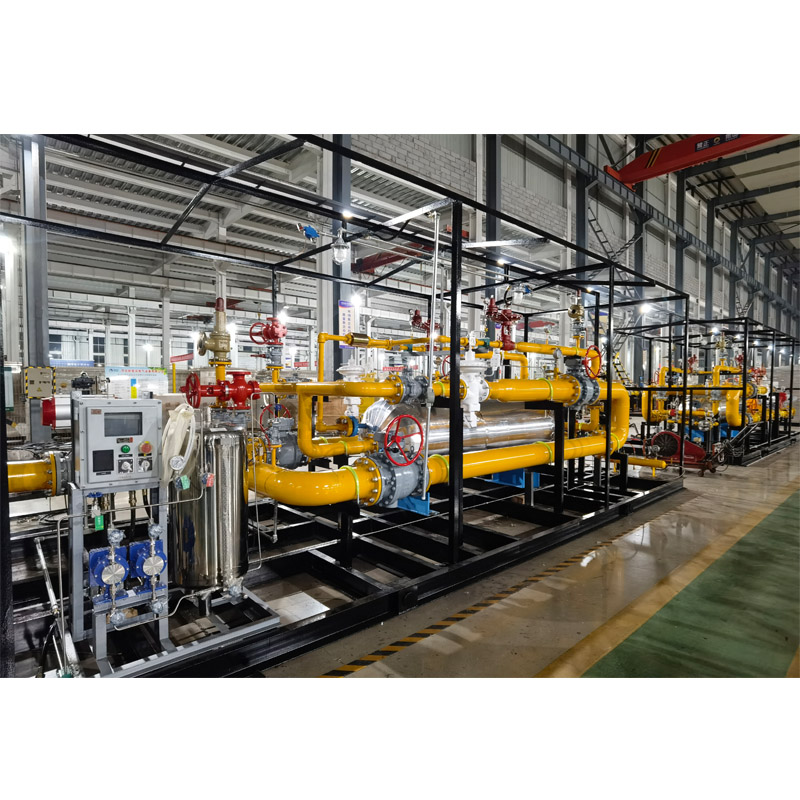
Sep . 23, 2024 18:27
Back to list
Pressure Regulation Device for Effective Flow Management and Safety Control
Understanding Pressure Reducing Devices Their Importance and Functionality
Pressure reducing devices are critical components in various industrial and domestic applications, designed to manage and control pressure within a system. These devices ensure that the pressure in pipelines and containers remains at safe and operational levels, protecting both equipment and personnel from the hazards associated with excessive pressure.
What are Pressure Reducing Devices?
Pressure reducing devices, often known as pressure regulators, are mechanisms that transfer high inlet pressure to a lower outlet pressure. They can be found in a wide range of applications, from gas distribution systems to water supply networks and fuel systems in vehicles. The primary aim of these devices is to reduce the risk of burst pipes, leaks, and other malfunctions that can arise from uncontrolled pressure levels.
How do Pressure Reducing Devices Work?
At the core of a pressure reducing device is a diaphragm or piston mechanism that modulates the flow of the medium—be it gas or liquid—based on the pressure needed at the outlet. When high-pressure fluid enters the regulator, it exerts force on the diaphragm. Once the pressure exceeds the pre-set threshold, the diaphragm or piston moves to adjust the flow, thereby stabilizing the outlet pressure.
Most regulators are equipped with a loading spring that determines the setpoint pressure. Operators can adjust this spring to ensure that the output pressure meets the requirements of the system in which the regulator is installed. Additionally, pressure gauges are often integrated to allow operators to monitor pressure levels easily.
Types of Pressure Reducing Devices
1. Single Stage Regulators These are used for applications where there is a moderate difference between inlet and outlet pressures. They are straightforward in design and suitable for low-pressure systems.
2. Two-Stage Regulators Ideal for situations with substantial pressure drops, two-stage regulators provide a more controlled and stable outlet pressure. They reduce the pressure in two steps, which helps minimize fluctuations and increases overall performance.
3. Back Pressure Regulators These devices maintain a specific outlet pressure by venting excess pressure back to the inlet. They are commonly used in processes where the downstream system's pressure needs to remain constant.
pressure reducing device

4. Electronic Regulators Advanced pressure control can be achieved with electronic regulators that use sensors and automation for precise monitoring and adjustments. These are particularly useful in sensitive applications where accuracy is paramount.
Applications of Pressure Reducing Devices
Pressure reducing devices are versatile and used in many industries, including
- Water Supply Systems To protect municipal and industrial water systems from high-pressure fluctuations that could damage infrastructure. - Natural Gas Delivery To ensure safe and efficient delivery of gas to residential and commercial buildings.
- Manufacturing Processes In industries like pharmaceuticals and chemicals, precise pressure control is essential for quality and safety.
- HVAC Systems To regulate pressure in heating, ventilation, and air conditioning systems, ensuring efficiency and comfort.
Importance of Pressure Reducing Devices
The importance of pressure reducing devices cannot be overstated. They not only enhance the safety and operational lifespan of various systems but also contribute to energy efficiency. By regulating pressure, these devices help reduce energy consumption, thus lowering costs and environmental impact.
Moreover, in an age where regulatory compliance and safety standards are critical, pressure reducing devices are integral to achieving operational integrity. They bolster risk management strategies by mitigating the potential for pressure-related incidents.
Conclusion
In conclusion, pressure reducing devices play a significant role across numerous applications, ensuring that systems operate safely and efficiently. Their ability to maintain stable pressure levels while safeguarding against potential hazards underscores their importance in both industrial and domestic settings. As technology evolves, further innovations in pressure regulation are expected, paving the way for even more reliable and efficient systems. Understanding and utilizing pressure reducing devices effectively can lead to enhanced safety, efficiency, and longevity of systems they serve.
Latest news
-
Safety Valve Spring-Loaded Design Overpressure ProtectionNewsJul.25,2025
-
Precision Voltage Regulator AC5 Accuracy Grade PerformanceNewsJul.25,2025
-
Natural Gas Pressure Regulating Skid Industrial Pipeline ApplicationsNewsJul.25,2025
-
Natural Gas Filter Stainless Steel Mesh Element DesignNewsJul.25,2025
-
Gas Pressure Regulator Valve Direct-Acting Spring-Loaded DesignNewsJul.25,2025
-
Decompression Equipment Multi-Stage Heat Exchange System DesignNewsJul.25,2025

